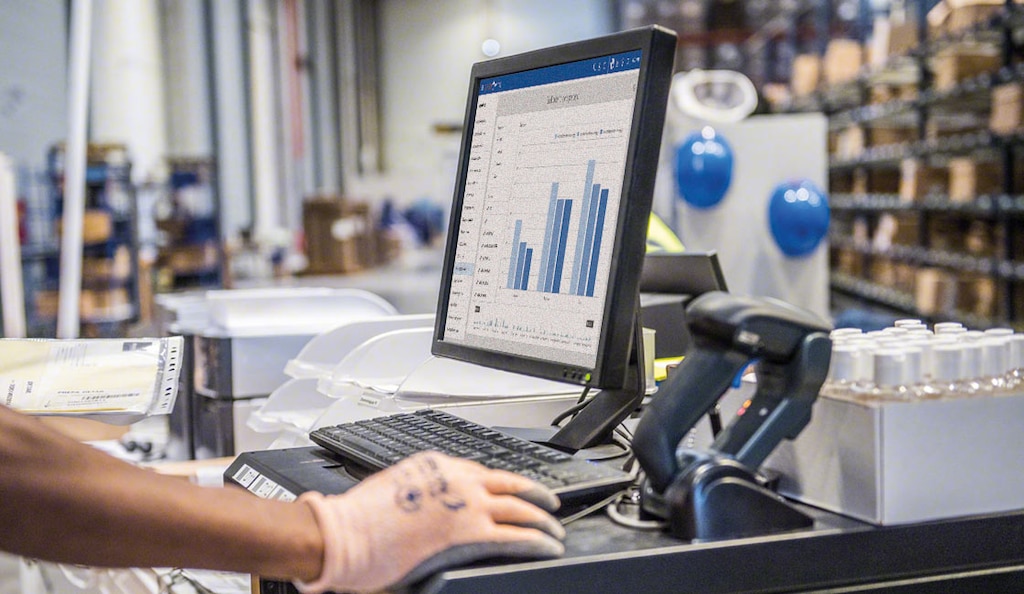
OTIF: on-time, in-full order delivery
OTIF, which refers to orders delivered on time and in full, is a key performance indicator (KPI) that measures the efficiency of a company’s logistics service. This metric describes the percentage of orders that have been processed successfully, i.e., with the products and quantities requested and in line with the delivery terms set with the customer.
This supply chain KPI expresses as a percentage the quality of the logistics service that a business provides to its customers or receives from its suppliers. A low rate could indicate significant errors in order fulfillment or dispatch processes.
What is the meaning of OTIF?
OTIF is a supply chain KPI that assesses a supplier’s capacity to fulfill its delivery commitments. It measures the supplier’s ability to ship products in the quantities requested, at the right place, and by the deadline set. As explained in the McKinsey analysis Defining ‘on-time, in-full’ in the consumer sector, “OTIF measures the extent to which shipments are delivered to their destination according to both the quantity and schedule specified on the order.”
A growing number of companies are employing the OTIF KPI to monitor their logistics efficiency. The main reason for this being a top metric is that, as opposed to KPIs such as shipped-on-time (SOT) and on-time performance (OTP), OTIF calculates orders that satisfy both conditions: completed correctly and delivered on time. Therefore, it gives businesses a comprehensive overview of the quality of their logistics service.
Also known as DIFOT — delivery in full, on time — OTIF became popular when Walmart adopted this KPI in an initiative to gauge its suppliers’ effectiveness. The OTIF initiative was designed to improve operations in Walmart’s stores and online sales channels, penalizing suppliers for loads that arrived before or past the deadline. Why? Walmart’s foray into e-commerce forced it to change its delivery strategy: from a four-day delivery window in 2016, to two days in 2017, to same-day deliveries starting in 2018. The new conditions meant that Walmart would demand on-time, in-full deliveries to ensure its competitiveness, as any delay could jeopardize the multinational company’s relationship with its end customers. Thus, as of September 15, 2020, Walmart requires its suppliers to meet an OTIF rate of 98% to avoid penalties.
How is OTIF calculated?
The OTIF logistics metric takes into account four variables:
- The order contains the items requested.
- The order consists of the product quantities stipulated.
- The order was delivered at the right time.
- The order was sent to the specified location.
To calculate a business’s OTIF rate, only orders that are delivered on time and in full, i.e., made up of all the products ordered by the customer, are counted.
OTIF calculation:
OTIF (%) = (on-time, in-full orders / total number of deliveries) x 100
Let’s look at an example: a frozen food company receives a purchase order of 400 units to be delivered in 15 days. However, due to lack of stock, only 390 orders can be sent, of which 20 are incomplete. So the business delivers 390 orders on time, but only 370 also meet the in full variable.
This company’s OTIF rate would be calculated as follows:
(370 / 400) x 100 = 92.5%

Advantages of employing the OTIF metric
The OTIF KPI is a tool that provides accurate information on an organization’s logistics efficiency. It lets companies know the percentage of deliveries they’ve made on time and in line with the terms set with their customers.
Monitoring and increasing your OTIF fulfillment rate will bring you these benefits:
- Improved customer satisfaction: the logistics service meets the product quantities and delivery terms previously agreed upon.
- Reduced logistics costs: a high OTIF percentage lowers the burden of product returns, one of the costliest operations in logistics today.
- Optimized storage space: a warehouse with a high OTIF rate can plan its logistics processes more easily and, as a result, maximize the different areas in the facility.
In short, an OTIF rate close to 100% facilitates rational logistics operations. It boosts the performance not only of delivery but also of processes such as order processing and inventory control, among others.
Tips for improving OTIF
The demands of Logistics 4.0 — coupled with short shipping windows and SKU proliferation in the warehouse — are driving businesses to seek solutions to maintain their efficiency in order delivery. The OTIF logistics metric has become the go-to tool for measuring a company’s logistics service at any given time. “OTIF metrics represent the culmination of your entire supply chain’s performance, and hold tremendous value as a capstone measure of your entire S&OP [sales and operations planning] process,” says Patrick Bower, author of the research article Is Customer Service Part of Your S&OP? It Should Be, originally published in the Journal of Business Forecasting.
According to Bower, there’s a direct link between OTIF monitoring and companies’ logistics efficiency: “Prudent planners must understand that the fill portion of the OTIF measure is directly correlated to the quality of all demand, inventory, and supply plans that preceded delivery to the warehouse. And it is an important measure to hear and consider when planning. An honest discussion of customer expectations vs. actual results will help improve your S&OP process.
Digitized logistics management is an effective tool for enhancing shipping efficiency and guaranteeing on-time, in-full order deliveries. Logistics software such as warehouse management system (WMS) ensures real-time stock control. With previous logistics planning, it provides stock availability at all times. A WMS coordinates with other digital programs — whether those of the organization itself or of other links in the supply chain — to optimize processes and avoid stockouts, bottlenecks, and overstock.
Regular monitoring of the OTIF KPI is virtually impossible with manually run warehouses. Implementing a WMS eliminates the risk of errors, as the software contains accurate information on the goods. Moreover, it indicates in real time the number of complete orders delivered as requested by customers.
OTIF for efficient logistics operations
A high OTIF rate is synonymous with effective, competitive logistics service. That’s because customer satisfaction is greater when orders are delivered as per the terms set and in the agreed-upon time and manner. For this reason, more and more companies are measuring their own logistics performance with this metric in addition to that of their suppliers. Why? A high OTIF percentage allows you to implement effective logistics methods, e.g., cross-docking and just-in-time order fulfillment strategies.
Nevertheless, against an omnichannel backdrop, managing orders manually makes it difficult to measure the OTIF metric. In this case, deploying a WMS will make a difference: it automates goods management, provides product traceability, and ensures inventory control.
Want to maximize efficiency in your warehouse and offer your customers the best possible logistics service? Don’t hesitate to reach out. Easy WMS warehouse management software from Interlake Mecalux is the ideal solution for optimizing logistics operations in your facility.
